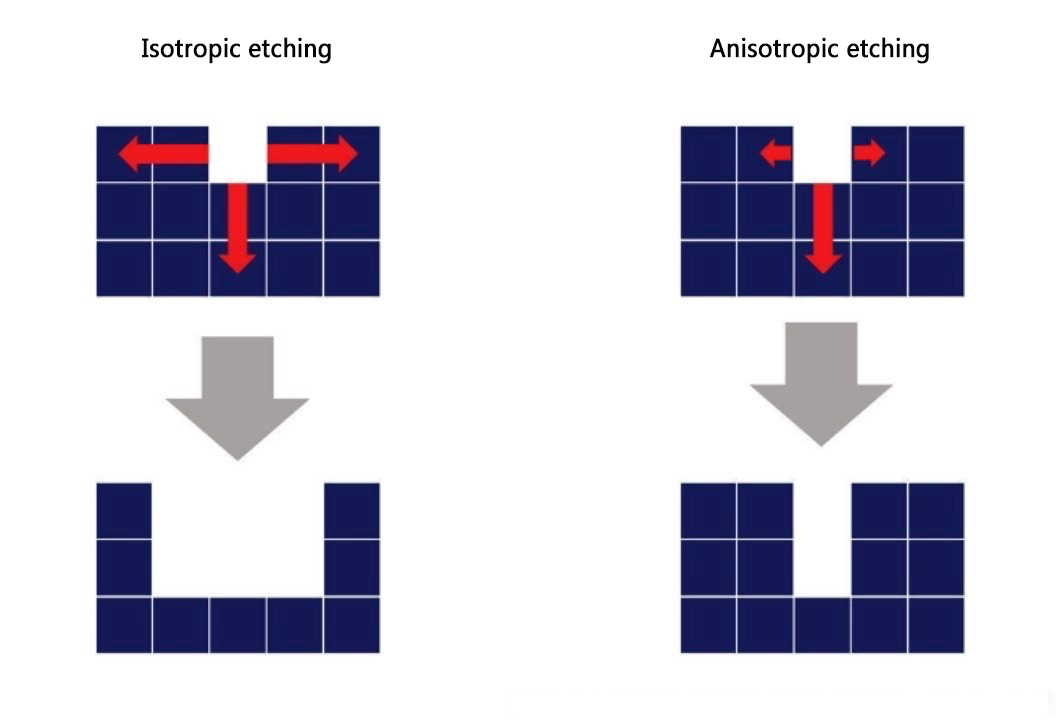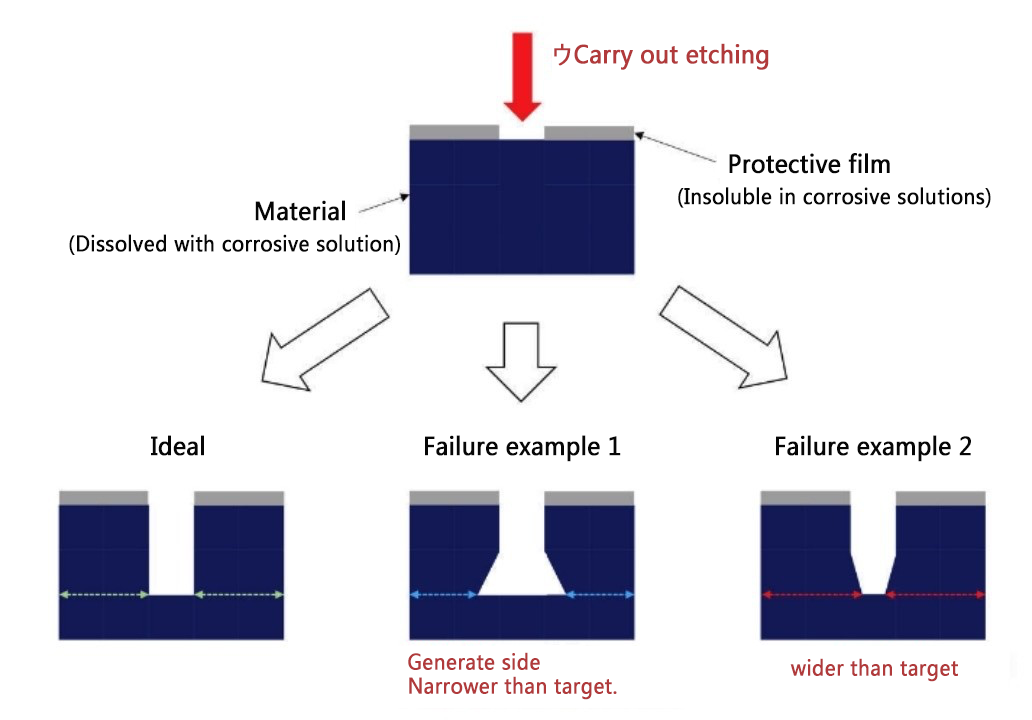In semiconductor manufacturing, there is a technique called “etching” during the processing of a substrate or a thin film formed on the substrate. The development of etching technology has played a role in realizing the prediction made by Intel founder Gordon Moore in 1965 that “the integration density of transistors will double in 1.5 to 2 years” (commonly known as “Moore’s Law”).
Etching is not an “additive” process like deposition or bonding, but a “subtractive” process. In addition, according to the different scraping methods, it is divided into two categories, namely “wet etching” and “dry etching”. To put it simply, the former is a melting method and the latter is a digging method.
In this article, we will briefly explain the characteristics and differences of each etching technology, wet etching and dry etching, as well as the application areas for which each is suitable.
Overview of etching process
Etching technology is said to have originated in Europe in the mid-15th century. At that time, acid was poured into an engraved copper plate to corrode the bare copper, forming an intaglio. Surface treatment techniques that exploit the effects of corrosion are widely known as “etching.”
The purpose of the etching process in semiconductor manufacturing is to cut the substrate or film on the substrate according to the drawing. By repeating the preparatory steps of film formation, photolithography, and etching, the planar structure is processed into a three-dimensional structure.
The difference between wet etching and dry etching
After the photolithography process, the exposed substrate is wet or dry etched in an etching process.
Wet etching uses a solution to etch and scrape away the surface. Although this method can be processed quickly and cheaply, its disadvantage is that the processing accuracy is slightly lower. Therefore, dry etching was born around 1970. Dry etching does not use a solution, but uses gas to hit the substrate surface to scratch it, which is characterized by high processing accuracy.
“Isotropy” and “Anisotropy”
When introducing the difference between wet etching and dry etching, the essential words are “isotropic” and “anisotropic”. Isotropy means that the physical properties of matter and space do not change with direction, and anisotropy means that the physical properties of matter and space vary with direction.
Isotropic etching means that etching proceeds by the same amount around a certain point, and anisotropic etching means that etching proceeds in different directions around a certain point. For example, in etching during semiconductor manufacturing, anisotropic etching is often chosen so that only the target direction is scraped, leaving other directions intact.
 Images of “Isotropic Etch” and “Anisotropic Etch”
Images of “Isotropic Etch” and “Anisotropic Etch”
Wet etching using chemicals.
Wet etching utilizes a chemical reaction between a chemical and a substrate. With this method, anisotropic etching is not impossible, but it is much more difficult than isotropic etching. There are many restrictions on the combination of solutions and materials, and conditions such as substrate temperature, solution concentration, and addition amount must be strictly controlled.
No matter how finely the conditions are adjusted, wet etching is difficult to achieve fine processing below 1 μm. One reason for this is the need to control side etching.
Undercutting is a phenomenon also known as undercutting. Even if it is hoped that the material will be dissolved only in the vertical direction (depth direction) by wet etching, it is impossible to completely prevent the solution from hitting the sides, so the dissolution of the material in the parallel direction will inevitably proceed. Due to this phenomenon, wet etching randomly produces sections that are narrower than the target width. In this way, when processing products that require precise current control, the reproducibility is low and the accuracy is unreliable.
 Examples of Possible Failures in Wet Etching
Examples of Possible Failures in Wet Etching
Why dry etching is suitable for micromachining
Description of Related Art Dry etching suitable for anisotropic etching is used in semiconductor manufacturing processes that require high-precision processing. Dry etching is often referred to as reactive ion etching (RIE), which may also include plasma etching and sputter etching in a broad sense, but this article will focus on RIE.
To explain why anisotropic etching is easier with dry etching, let’s take a closer look at the RIE process. It is easy to understand by dividing the process of dry etching and scraping off the substrate into two types: “chemical etching” and “physical etching”.
Chemical etching occurs in three steps. First, the reactive gases are adsorbed on the surface. Reaction products are then formed from the reaction gas and substrate material, and finally the reaction products are desorbed. In the subsequent physical etching, the substrate is etched vertically downward by applying argon gas vertically to the substrate.
Chemical etching occurs isotropically, whereas physical etching can occur anisotropically by controlling the direction of gas application. Because of this physical etching, dry etching allows more control over the etching direction than wet etching.
Dry and wet etching also requires the same strict conditions as wet etching, but it has higher reproducibility than wet etching and has many easier-to-control items. Therefore, there is no doubt that dry etching is more conducive to industrial production.
Why Wet Etching Is Still Needed
Once you understand the seemingly omnipotent dry etching, you may wonder why wet etching still exists. However, the reason is simple: wet etching makes the product cheaper.
The main difference between dry etching and wet etching is cost. The chemicals used in wet etching are not that expensive, and the price of the equipment itself is said to be about 1/10 of that of dry etching equipment. In addition, the processing time is short and multiple substrates can be processed at the same time, reducing production costs. As a result, we can keep product costs low, giving us an advantage over our competitors. If the requirements for processing accuracy are not high, many companies will choose wet etching for rough mass production.
The etching process was introduced as a process that plays a role in microfabrication technology. The etching process is roughly divided into wet etching and dry etching. If cost is important, the former is better, and if microprocessing below 1 μm is required, the latter is better. Ideally, a process can be chosen based on the product to be produced and the cost, rather than which one is better.
Post time: Apr-16-2024
